By Mithun Srivastava- Automate to Profit
Why do 98% of affiliate blogs barely make money while a tiny fraction become six-figure machines?
It’s not traffic. It’s not niche. It’s not even SEO.
The real difference is conversion rate optimization (CRO) — how well you turn readers into buyers.
In 2025, CRO has gone through a total makeover. Forget the old tricks of swapping button colors or tweaking a headline. Today’s winners use AI-powered A/B testing, heatmaps that show exactly where users look and click, and data-driven copywriting that feels almost psychic in predicting what readers want.
The truth? Even a 1% bump in your blog’s conversion rate can double your affiliate income without a single new visitor. That’s the kind of leverage most marketers dream about — and it’s exactly what this playbook will help you unlock.
The modern affiliate marketing landscape is increasingly competitive, with thousands of bloggers competing for the same audience attention and affiliate commissions. In this environment, even small improvements in conversion rates can translate to substantial revenue increases. A blog that converts 2% of visitors compared to one that converts 1% will generate twice the affiliate revenue from the same traffic volume. When scaled across thousands of monthly visitors, these optimization improvements can mean the difference between a hobby blog and a profitable business.
This comprehensive guide explores the cutting-edge conversion rate optimization strategies that are driving success for affiliate bloggers in 2025. We’ll examine how artificial intelligence is revolutionizing A/B testing, how heatmap analytics provide unprecedented insights into user behavior, and how data-driven copywriting techniques can dramatically improve conversion performance. The strategies outlined here are based on real-world testing, industry research, and proven methodologies that have generated measurable results for affiliate marketers across various niches.
Table of Contents
1.The Evolution of CRO for Affiliate Marketing
2.Understanding Modern User Behavior and Expectations
3.AI-Powered A/B Testing: Beyond Traditional Methods
4.Heatmap Analytics: Visualizing User Intent
5.Data-Driven Copywriting for Affiliate Conversions
6.Landing Page Optimization Strategies
7.Mobile-First CRO Approaches
8.Advanced Personalization Techniques
9.Conversion Funnel Optimization
10.Performance Measurement and Analytics
11.Case Studies and Real-World Results
12.Future-Proofing Your CRO Strategy
The Evolution of CRO for Affiliate Marketing {#evolution-of-cro}
Conversion rate optimization for affiliate marketing has undergone a dramatic transformation over the past decade, evolving from simple split testing of headlines and button colors to sophisticated, AI-driven optimization systems that can adapt in real-time to user behavior patterns. This evolution has been driven by advances in data analytics, machine learning capabilities, and a deeper understanding of user psychology and decision-making processes.
The early days of affiliate CRO focused primarily on basic elements such as call-to-action button placement, color schemes, and headline variations. While these elements remain important, modern CRO strategies encompass comprehensive user experience optimization that considers the entire customer journey from initial awareness to final conversion. Today’s successful affiliate marketers understand that conversion optimization is not just about individual page elements, but about creating cohesive experiences that guide users naturally toward desired actions.
Modern CRO strategies leverage sophisticated data analytics to understand user behavior patterns, preferences, and decision-making triggers. Advanced analytics platforms can track micro-interactions, scroll patterns, attention flows, and engagement metrics that provide deep insights into how users interact with affiliate content. This data enables optimization strategies that go far beyond surface-level changes to address fundamental user experience issues that impact conversion performance.
AI-Powered A/B Testing: Beyond Traditional Methods {#ai-ab-testing}
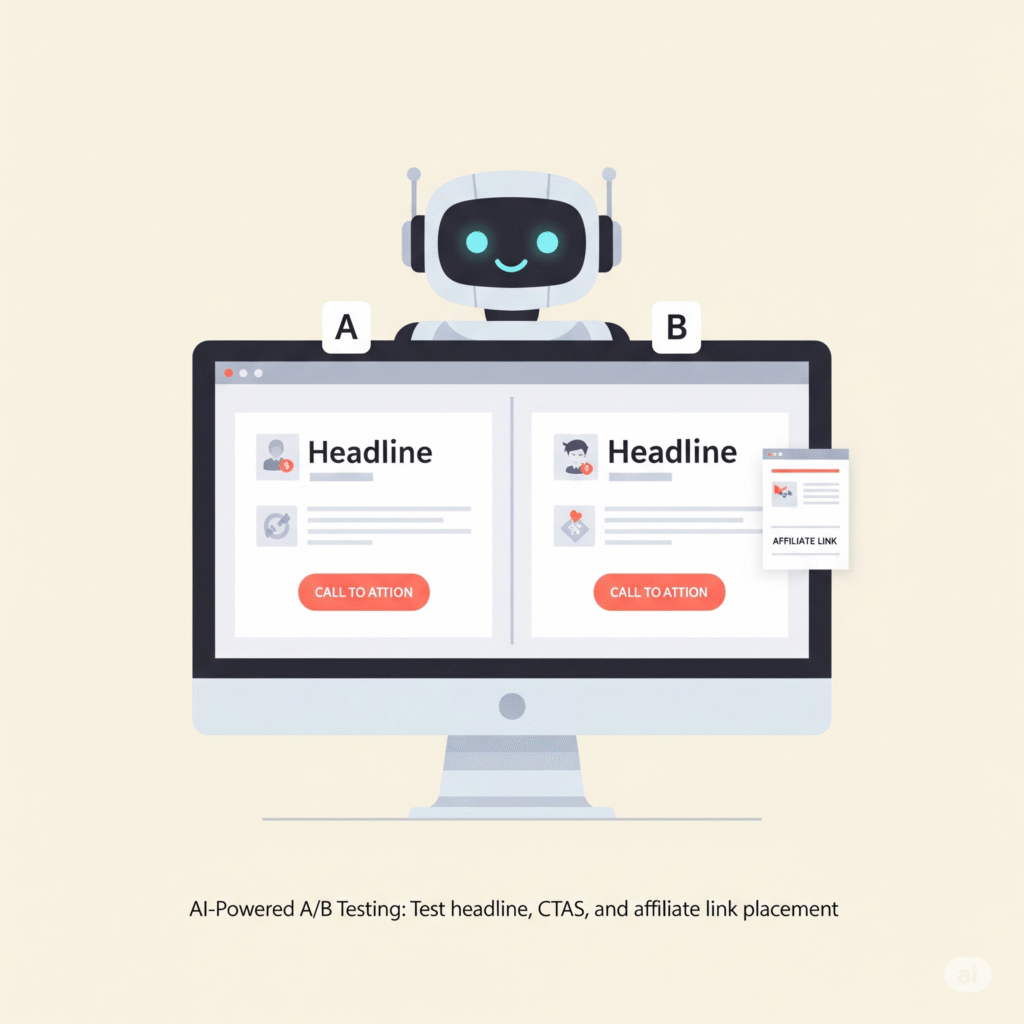
Artificial intelligence has revolutionized A/B testing by enabling more sophisticated test designs, faster statistical significance, and automated optimization that adapts to changing user behaviors. AI-powered testing platforms can analyze vast amounts of user data to identify optimal test variations, predict test outcomes, and automatically allocate traffic to winning variations without manual intervention [1].
Traditional A/B testing required marketers to manually design test variations, wait for statistical significance, and make optimization decisions based on limited data points. AI-powered testing platforms can generate test variations automatically, analyze performance in real-time, and make optimization decisions based on complex algorithms that consider multiple variables simultaneously. This approach enables faster optimization cycles and more sophisticated testing strategies that would be impossible to manage manually.
Machine learning algorithms can identify patterns in user behavior that humans might miss, enabling the creation of highly targeted test variations that resonate with specific user segments. These algorithms can analyze factors such as traffic source, device type, geographic location, time of day, and browsing behavior to create personalized experiences that improve conversion rates for different user groups.
ABtesting.ai and similar platforms represent the cutting edge of AI-powered optimization, offering automated testing that can improve conversion rates by 20-40% compared to traditional testing methods [2]. These platforms use machine learning to continuously optimize page elements, content, and user experiences based on real-time performance data.
Heatmap Analytics: Visualizing User Intent {#heatmap-analytics}
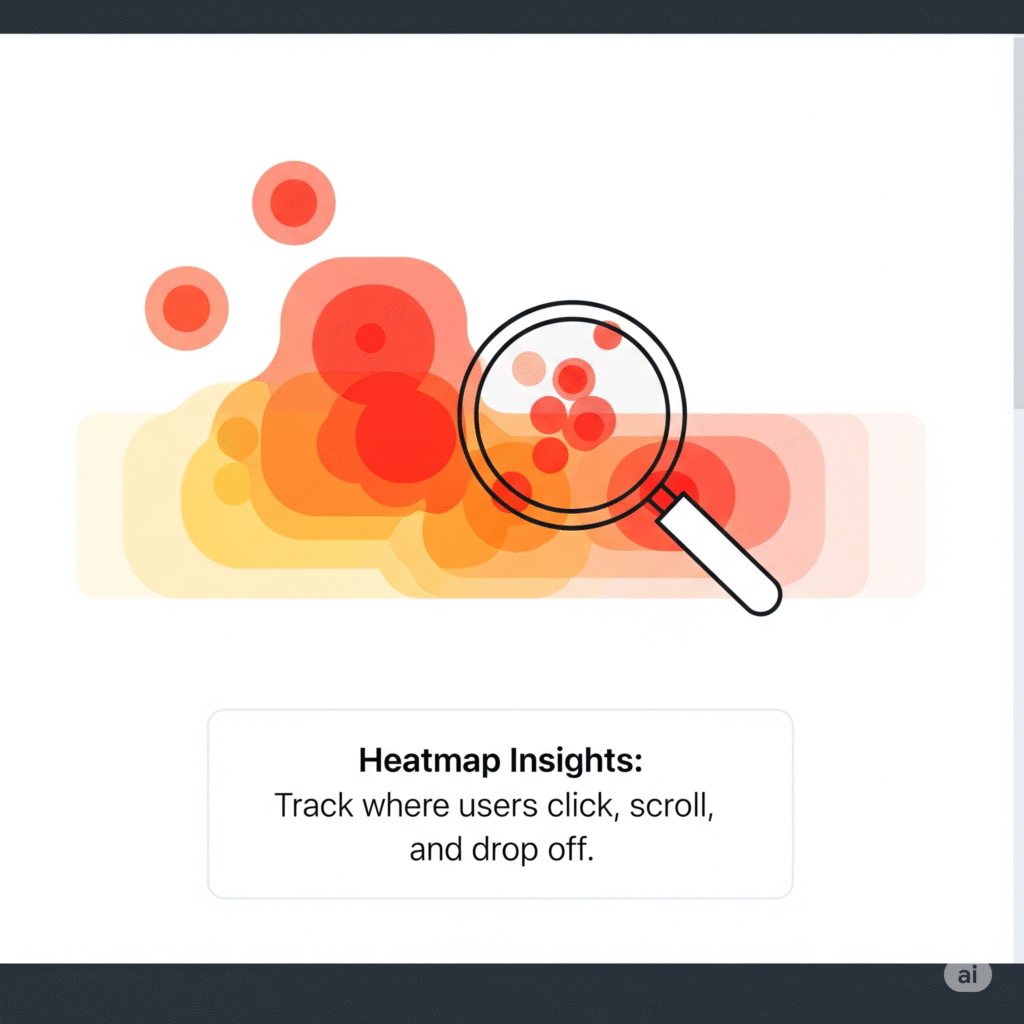
Heatmap analytics provide visual representations of user behavior that reveal how visitors interact with affiliate content, where they focus their attention, and what elements drive or prevent conversions. Modern heatmap tools like Hotjar, Crazy Egg, and FullStory offer sophisticated analytics that go beyond simple click tracking to provide comprehensive insights into user intent and behavior patterns.
Click heatmaps show where users click on pages, revealing which elements attract attention and which are ignored. For affiliate marketers, this data is crucial for optimizing the placement of affiliate links, call-to-action buttons, and promotional content. Click heatmaps can reveal unexpected user behavior patterns that inform optimization strategies and content placement decisions.
Scroll heatmaps indicate how far users scroll down pages and where they typically abandon content. This information is particularly valuable for affiliate bloggers who need to optimize content length, placement of affiliate offers, and page structure to maximize engagement and conversions. Understanding scroll patterns helps optimize the placement of key conversion elements within the user’s attention span.
Attention heatmaps use eye-tracking technology and predictive algorithms to show where users focus their visual attention. These heatmaps reveal which content elements, images, and design features capture user attention and which are overlooked. For affiliate marketers, attention heatmaps provide insights into how to structure content and design elements to guide user attention toward conversion opportunities.
Data-Driven Copywriting for Affiliate Conversions {#data-driven-copywriting}
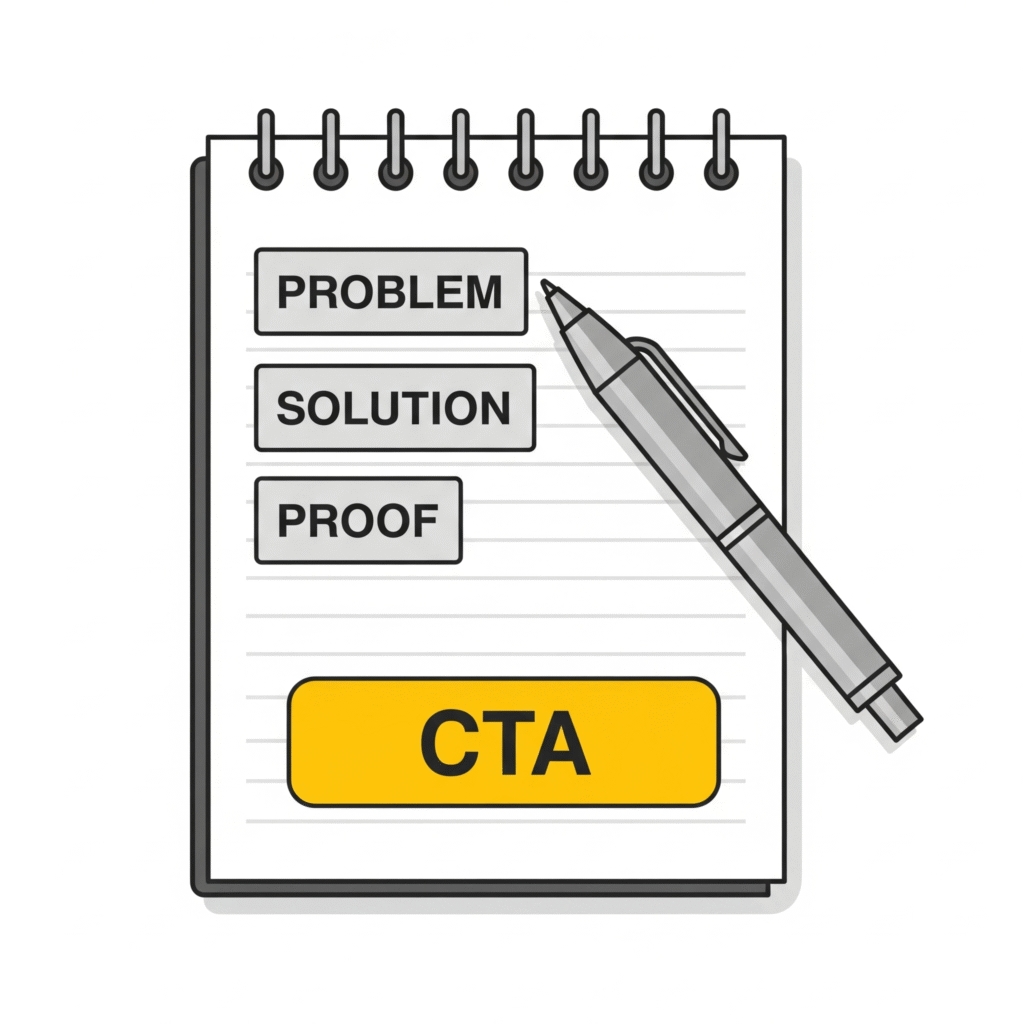
Effective affiliate copywriting in 2025 relies on data-driven insights rather than intuition or generic best practices. Advanced analytics platforms can analyze which words, phrases, and messaging approaches generate the highest conversion rates, enabling affiliate marketers to optimize their copy based on actual performance data rather than assumptions.
Emotional trigger analysis uses sentiment analysis and behavioral data to identify which emotional appeals resonate most strongly with target audiences. This analysis can reveal whether audiences respond better to fear-based messaging, aspiration-focused content, or logical arguments, enabling copywriters to craft messages that align with audience psychology and decision-making patterns.
Conversion-focused content structures guide readers naturally toward affiliate offers through strategic information architecture and persuasive writing techniques. These structures typically include problem identification, solution presentation, social proof integration, and clear calls-to-action that create logical progression toward conversion decisions.
A/B testing of copy variations enables systematic optimization of headlines, product descriptions, call-to-action text, and other written content. Advanced testing platforms can test multiple copy variations simultaneously and identify winning combinations that maximize conversion performance across different user segments and traffic sources.
Landing Page Optimization Strategies {#landing-page-optimization}
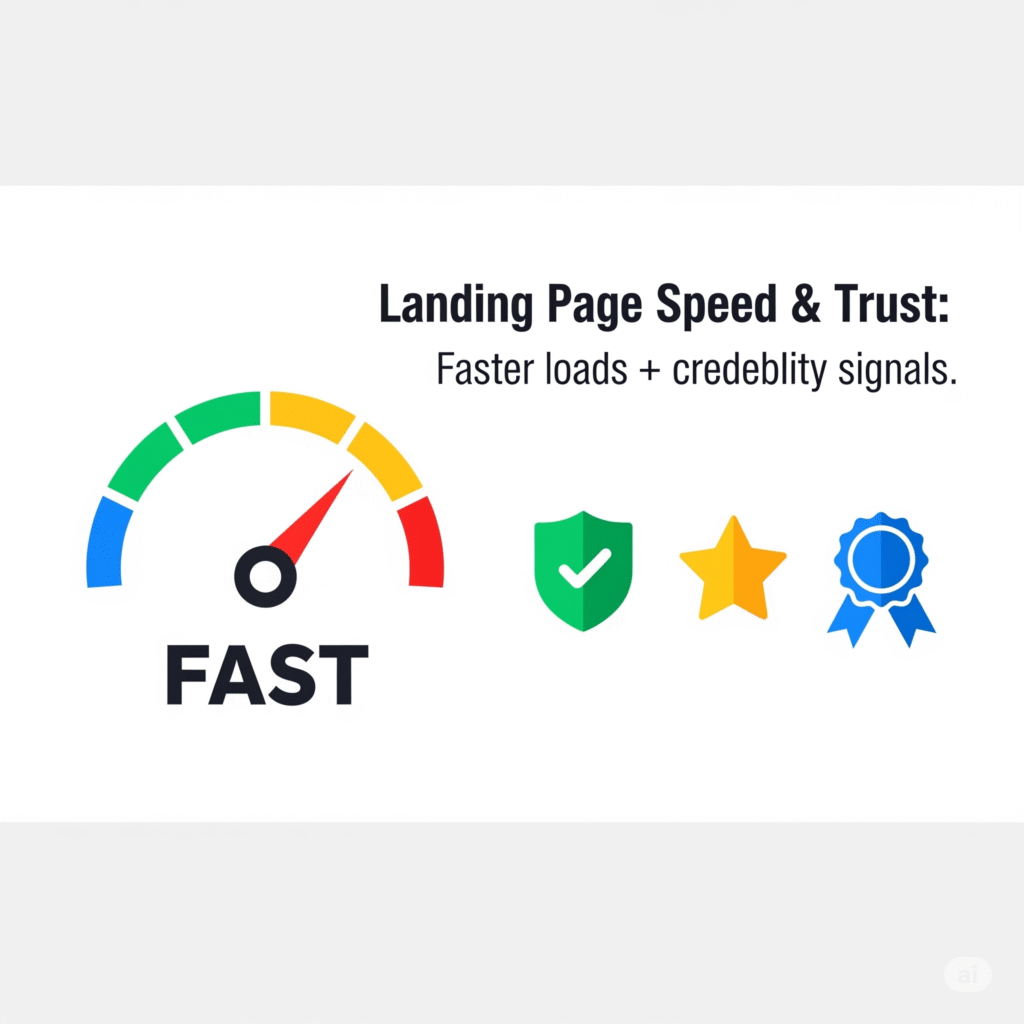
Landing page optimization for affiliate marketing requires balancing user experience with conversion objectives while maintaining compliance with affiliate program requirements and search engine guidelines. Effective landing pages guide users naturally toward affiliate offers while providing genuine value and maintaining trust and credibility.
Page load speed optimization is crucial for affiliate landing pages, as even small delays can significantly impact conversion rates and search engine rankings. Modern optimization techniques include image compression, code minification, content delivery network implementation, and server-side optimization that ensure fast loading times across all devices and connection speeds.
Mobile responsiveness has become essential as mobile traffic accounts for the majority of web browsing in most markets. Affiliate landing pages must provide excellent user experiences across all device types, with particular attention to touch-friendly navigation, readable text, and optimized conversion elements for mobile users.
Trust signal integration includes elements such as testimonials, reviews, security badges, and credibility indicators that build confidence in affiliate recommendations. These trust signals are particularly important for affiliate marketing, where users may be skeptical of promotional content and need reassurance before clicking affiliate links or making purchases.
Mobile-First CRO Approaches {#mobile-first-cro}
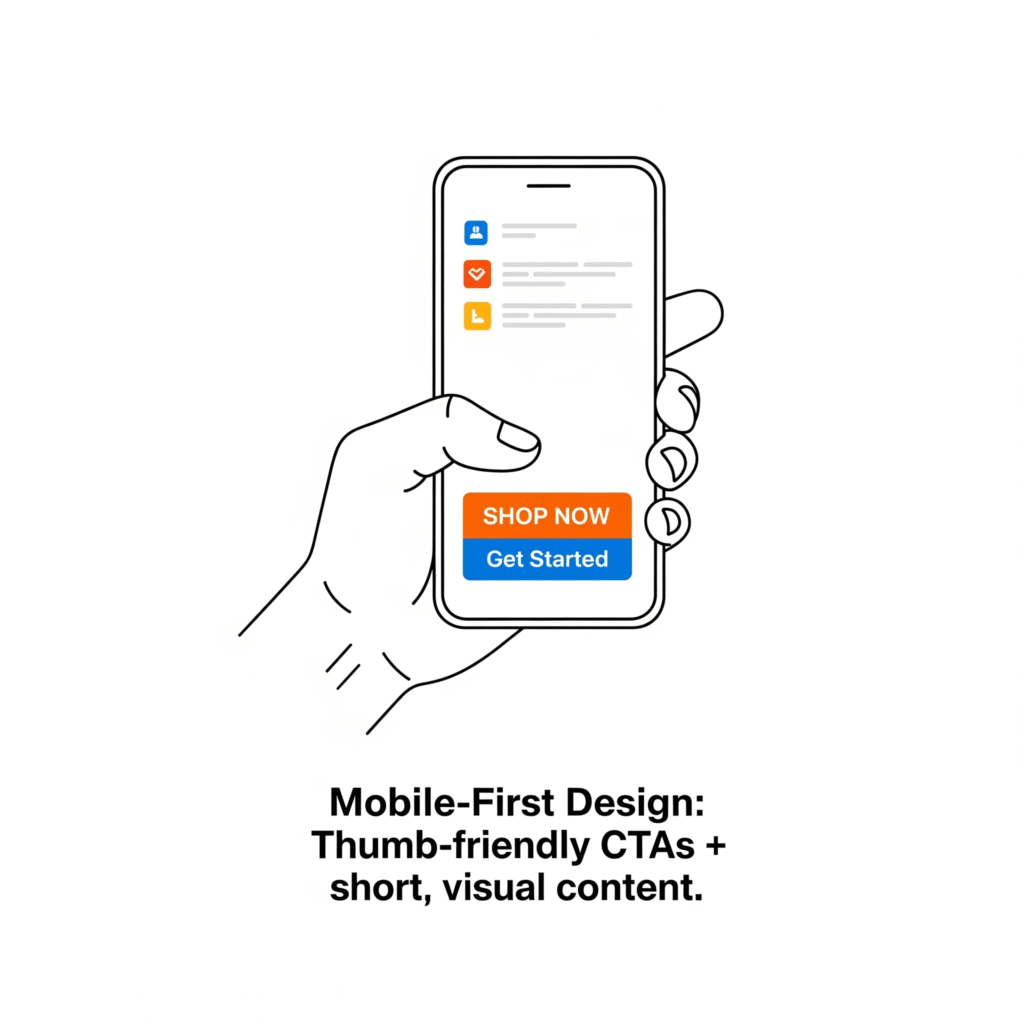
Mobile-first optimization has become essential for affiliate marketing success, as mobile devices account for over 60% of web traffic in most markets. Mobile users have different behavior patterns, attention spans, and conversion triggers compared to desktop users, requiring specialized optimization strategies that address mobile-specific challenges and opportunities.
Touch-friendly design ensures that all interactive elements are easily accessible on mobile devices, with appropriate sizing, spacing, and positioning for touch navigation. This includes optimizing button sizes, link spacing, form fields, and navigation elements to provide smooth user experiences that don’t frustrate mobile users.
Page speed optimization becomes even more critical for mobile users, who often have slower internet connections and less patience for slow-loading content. Mobile-specific optimization techniques include accelerated mobile pages (AMP), progressive web app features, and mobile-optimized images and content that load quickly on mobile networks.
Mobile-specific conversion elements account for the unique characteristics of mobile browsing, including shorter attention spans, different reading patterns, and context-specific usage scenarios. Mobile-optimized affiliate content typically features shorter paragraphs, more visual elements, and streamlined conversion paths that accommodate mobile user behavior.
Advanced Personalization Techniques {#personalization-techniques}
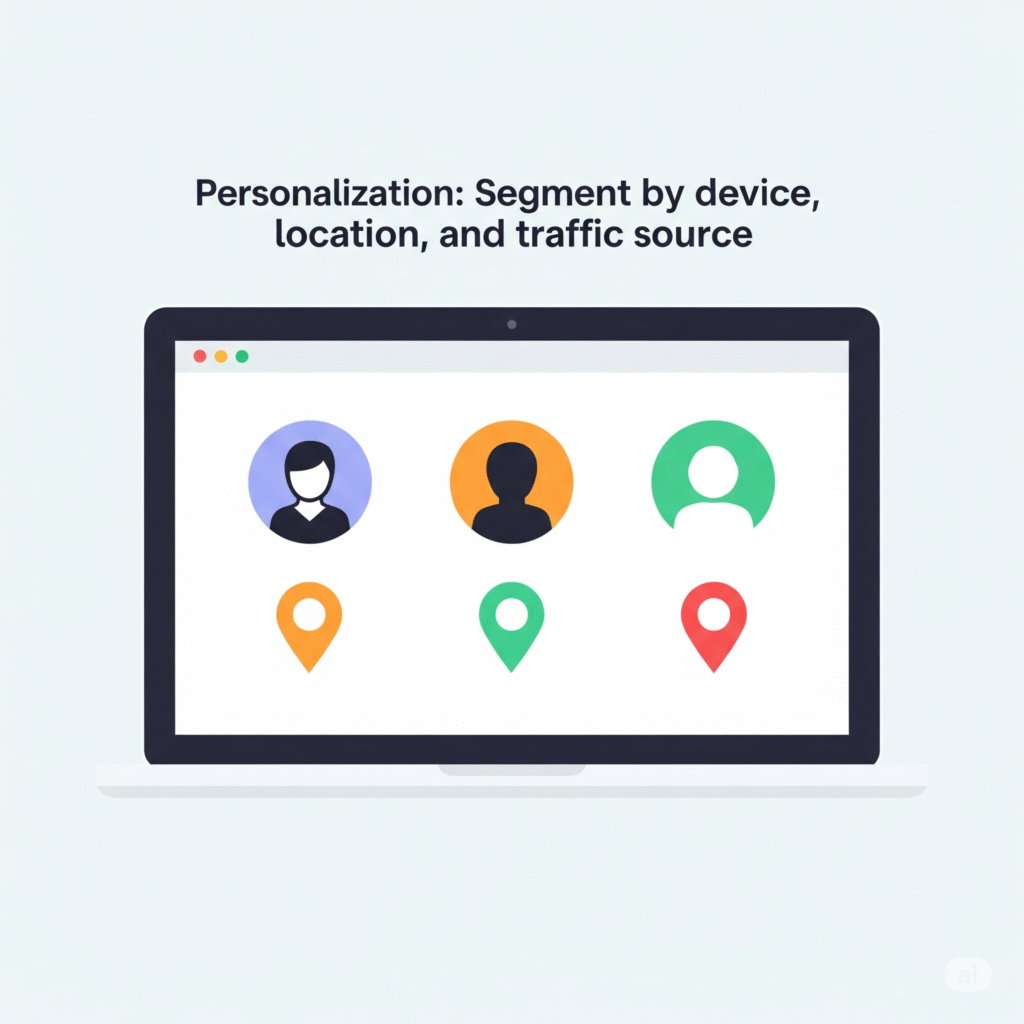
Personalization has evolved beyond simple name insertion to encompass sophisticated content customization based on user behavior, preferences, demographics, and contextual factors. Advanced personalization can improve affiliate conversion rates by 20-50% by delivering more relevant content and offers to different user segments [3].
Behavioral personalization adapts content and offers based on user actions, browsing history, and engagement patterns. This might include showing different affiliate products to users based on their previous interactions, customizing content recommendations based on reading behavior, or adjusting messaging based on traffic source and user intent.
Geographic personalization customizes content and offers based on user location, enabling region-specific promotions, local product availability, and culturally relevant messaging. This personalization is particularly valuable for affiliate marketers promoting products with geographic restrictions or regional variations.
Device-based personalization optimizes experiences for different device types and capabilities, ensuring that content and conversion elements are optimized for the user’s specific browsing context. This might include different layouts for mobile versus desktop users, or customized functionality based on device capabilities.
Conversion Funnel Optimization {#funnel-optimization}
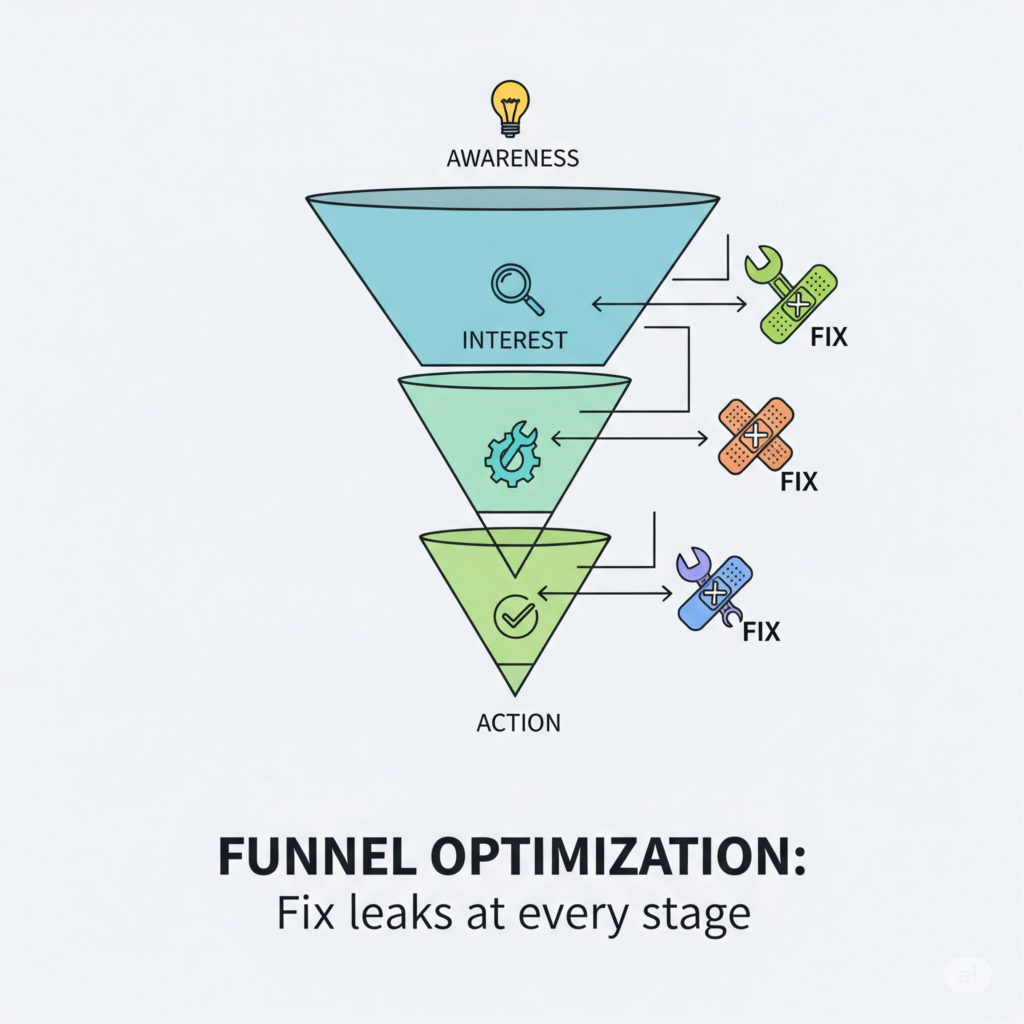
Conversion funnel optimization focuses on improving the entire user journey from initial awareness to final conversion, identifying and addressing bottlenecks that prevent users from progressing toward affiliate offers. Effective funnel optimization requires comprehensive analytics that track user behavior across multiple touchpoints and interactions.
Top-of-funnel optimization focuses on attracting qualified traffic and creating positive first impressions that encourage deeper engagement. This includes optimizing content discoverability, improving page load speeds, and creating compelling introductory content that builds interest and trust.
Middle-of-funnel optimization nurtures user interest and builds confidence in affiliate recommendations through educational content, social proof, and value demonstration. This stage typically involves longer-form content that addresses user questions and concerns while gradually introducing affiliate solutions.
Bottom-of-funnel optimization focuses on converting interested users into affiliate commissions through optimized calls-to-action, streamlined conversion processes, and compelling offers that motivate immediate action. This stage requires careful attention to conversion barriers and friction points that might prevent users from completing desired actions.
Performance Measurement and Analytics {#performance-measurement}
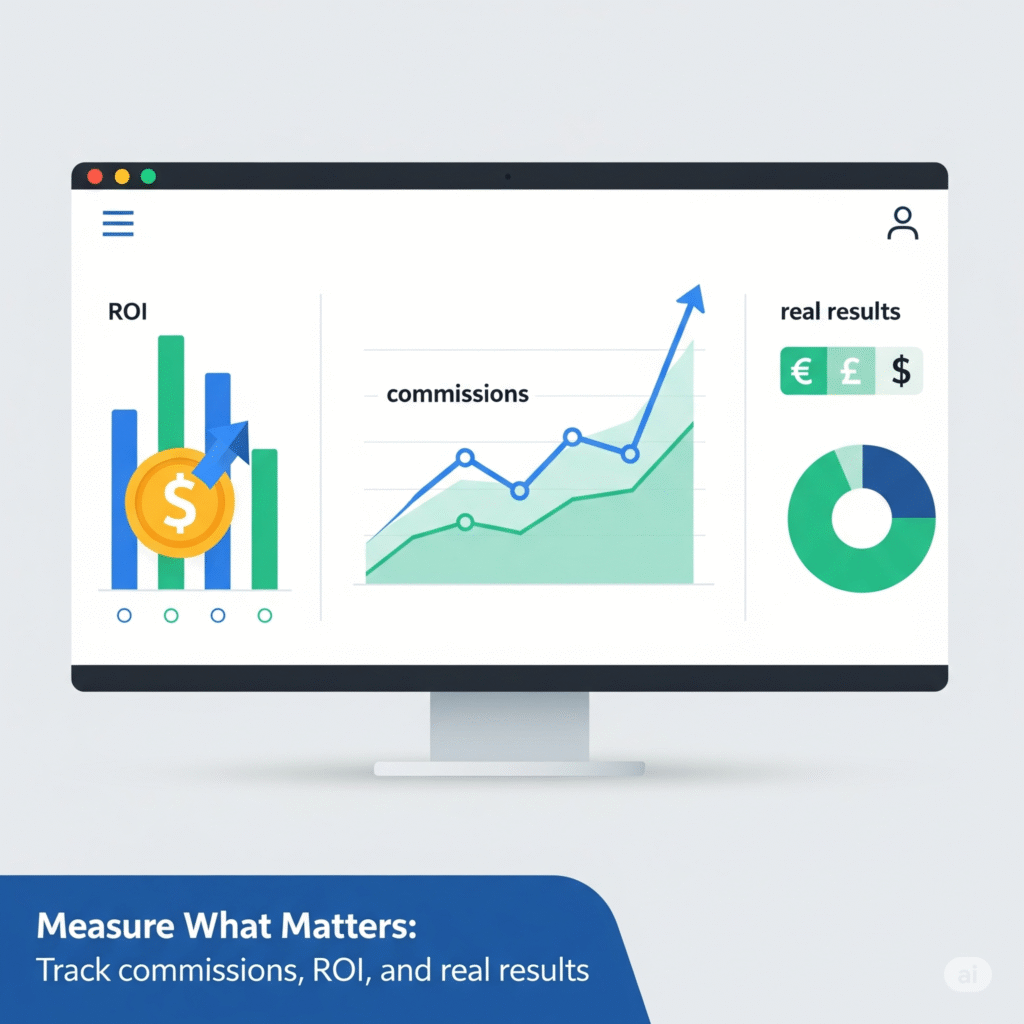
Comprehensive performance measurement enables data-driven optimization decisions and provides insights into which CRO strategies generate the best results. Modern analytics platforms provide detailed insights into user behavior, conversion performance, and optimization opportunities that guide strategic decision-making.
Conversion tracking goes beyond simple click-through rates to measure actual affiliate commissions, customer lifetime value, and return on investment. This comprehensive tracking enables optimization based on business outcomes rather than just engagement metrics.
User experience metrics include page load speeds, bounce rates, time on page, and engagement indicators that provide insights into how users interact with affiliate content. These metrics help identify user experience issues that might impact conversion performance.
A/B testing analytics provide statistical insights into test performance, significance levels, and optimization opportunities. Advanced testing platforms offer sophisticated analytics that help identify winning variations and guide future optimization strategies.
Case Studies and Real-World Results {#case-studies}
Real-world implementation of advanced CRO strategies has generated significant results for affiliate marketers across various niches. One technology affiliate blogger increased conversion rates by 180% through systematic implementation of AI-powered testing, heatmap optimization, and data-driven copywriting techniques.
Another case study in the personal finance niche demonstrated how mobile-first optimization and advanced personalization could improve mobile conversion rates by 240% while reducing bounce rates by 35%. The key factors included streamlined mobile navigation, personalized content recommendations, and optimized conversion elements for mobile users.
Future-Proofing Your CRO Strategy {#future-proofing}
The CRO landscape will continue evolving rapidly, driven by advances in artificial intelligence, changing user expectations, and new technologies that enable more sophisticated optimization strategies. Future-proofing strategies include staying current with emerging technologies, maintaining flexible optimization frameworks, and focusing on user experience fundamentals that remain constant despite technological changes.
Emerging technologies such as voice search optimization, augmented reality experiences, and advanced personalization will create new opportunities for affiliate marketers who adapt their CRO strategies to leverage these capabilities effectively.
Conclusion
Conversion rate optimization for affiliate blogs in 2025 requires sophisticated strategies that combine artificial intelligence, advanced analytics, and deep understanding of user behavior. Success requires systematic implementation of testing methodologies, data-driven decision making, and continuous optimization based on performance insights.
The strategies outlined in this guide provide a comprehensive framework for improving affiliate blog conversion rates through proven optimization techniques. However, the most successful implementations adapt these concepts to specific audiences, niches, and business objectives while maintaining focus on user experience and value delivery.
By leveraging AI-powered testing, heatmap analytics, and data-driven copywriting techniques, affiliate bloggers can create high-converting experiences that maximize revenue potential while providing genuine value to their audiences. The investment in proper CRO implementation pays dividends through improved conversion rates, higher affiliate commissions, and more sustainable business growth.
References
[1] VWO – 19 Best Conversion Rate Optimization Tools + Software [2025]. Available at: https://vwo.com/conversion-rate-optimization/conversion-rate-optimisation-tools/
[2] ABtesting.ai – AI A/B Testing Software to Improve Conversions. Available at: https://abtesting.ai/
[3] Hotjar – Website Heatmap Tool: Optimize UX with Heatmap Software. Available at: https://www.hotjar.com/website-heatmap-tool/
[4] OptinMonster – 7+ Best Conversion Rate Optimization Tools (2025 Update). Available at: https://optinmonster.com/36-conversion-rate-optimization-tools-that-pros-cant-ignore/
[5] Landingi – 8 Best Heatmap Tools to Optimize Landing Pages and Conversion. Available at: https://landingi.com/conversion-optimization/heatmap-tools/
This article was created by Mithun Srivastava- Automate to Profit as part of a comprehensive affiliate marketing content series. For advanced CRO implementation and optimization support, consider consulting with conversion optimization specialists or joining affiliate marketing communities focused on data-driven
